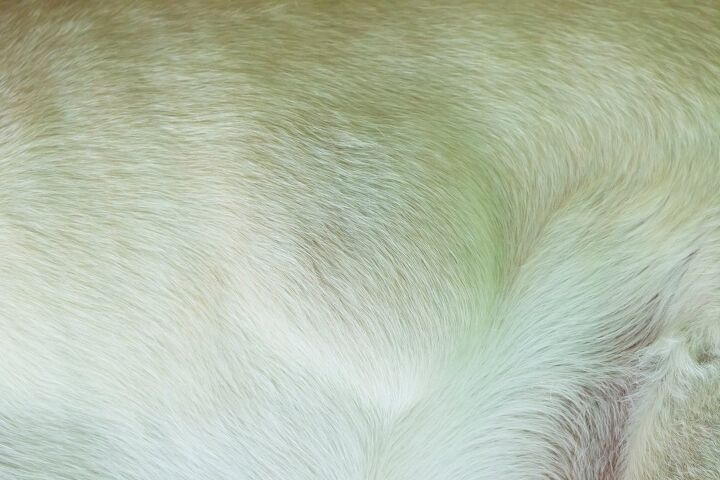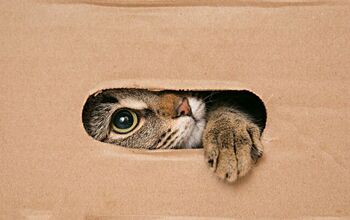My Dog Has Fat Lumps - Do They Mean My Pet is Overweight?

You and Rover are all snuggled in on the sofa for the final season of your favorite, binge-worthy series. You reach down to give him an appreciative belly scratch when all of a sudden you feel a lump. Like pet parents the world over, your heart drops and you assume the worst. But what you may have felt could be a simple fat lump. It’s not nothing, but it’s also not terminal and here’s what you need to know about them.
What is a Fat Lump?
It’s actually called a lipoma and it’s not uncommon to find one or more in dogs (or humans, for that matter). In a nutshell, it’s a benign mass of fat cells that appear within the subcutaneous or inner layer of skin tissue. When pressed, you should feel it move around slightly. The good news is that these slow-growing masses are not painful for your pooch unless they start appearing in areas such as his armpit or shoulder blade, where they can rub as he walks or press against a harness.
In rare instances, you may be dealing with what’s called an infiltrative lipoma where the lump begins to grow into your dog’s muscle and other tissues. These can lead to discomfort as they increase in size and may require surgical removal.
Fat lump masses can appear suddenly and present on your pooch’s belly, back, legs or underarms. It’s also not uncommon for older dogs to have multiple fat lumps. And while certain breeds seem more predisposed to fat lumps including Labrador Retrievers, Cocker Spaniels, and Doberman Pinschers (to name a few) any breed or mixed breed can get them. While weight and hormones do appear to be contributing factors, certain environmental factors have also been named as potential culprits.
What Causes a Fat Lump?
Older dogs are more inclined to have fat lumps and while the reason for this may simply be down to a drop in activity levels with a resultant weight gain, research is starting to suggest there could be other culprits at play. These include:
· Direct sun-to-skin exposure (an issue for breeds with thin, single coats)
· Genetics (hence the breed-specific reference)
· Chemical exposure (see more below)
With chemical exposure it’s your pet’s endocrine and immune systems being impacted. What these systems do is gather any unwanted or unhealthy materials in the body and attempt to excrete them out through the largest organ in the body – the skin surface. What’s being suggested is that these fat lumps are in fact, your pet’s body trying to sluff off stuff it can’t process.
What sort of “stuff” you might ask? Well, let’s take a look at where some of this “unhealthy” material may come from.
Drugs: while it’s important to have your pet treated for rabies, Bordetella, fleas, ticks and other harmful and potentially life-threatening conditions, try to avoid having your pet over-exposed to unnecessary drugs and chemicals.
Diet: today’s processed foods are loaded with artificial flavors, colors, preservatives and carbs that haven’t traditionally been part of an animal’s diet. When his body doesn’t recognize how to process these additives, it stores them as fat lumps.
Chemicals: our lives are filled with chemicals. From paint, furnishings and carpets with high VOCs to walking across a lawn that’s been treated with pesticides. Your dog absorbs all of these chemicals by breathing them in or absorbing them through their pads.
Diagnosis and Treatment
Fat lumps are typically confirmed through a fine needle aspiration that allows your vet to check the cells and make a final diagnosis. While they can be removed surgically, this type of invasive treatment may not be recommended based on the age or health of your pet.
While they don’t spread in the same manner as cancer, other lumps can appear in other locations on your pet. So, unless it’s causing him discomfort – such as rubbing against a harness or making it difficult to walk – the best treatment can often be to leave it alone.
Note that they don’t go away but can shrink if your pet loses weight. The growth rate is slow however as with any mass, it makes sense to monitor it every few months for a change in shape or size that might suggest it’s becoming problematic.
And before you assume that what you’re dealing with is simply a fat lump, have your veterinarian check it out to ensure it’s not an abscess that requires immediate treatment.

Sharing space with three seriously judgy Schnoodles and a feline who prefers to be left alone. #LivingMyBestLife
More by Mary Simpson























